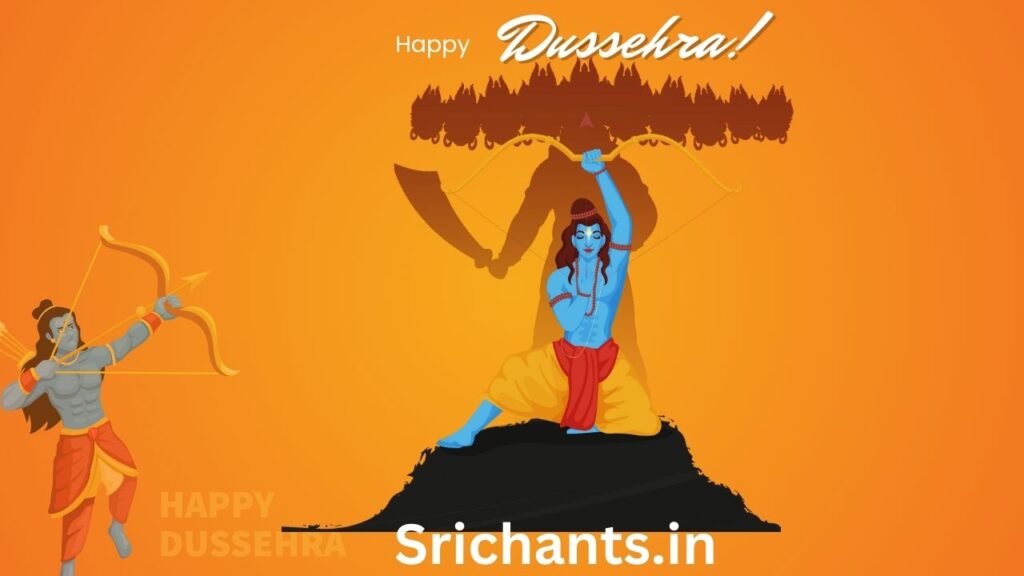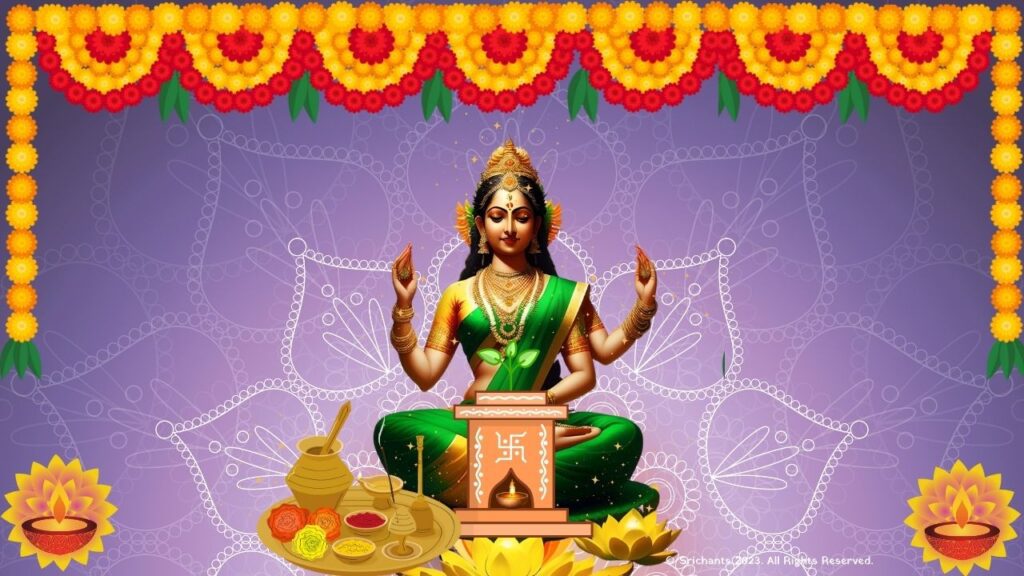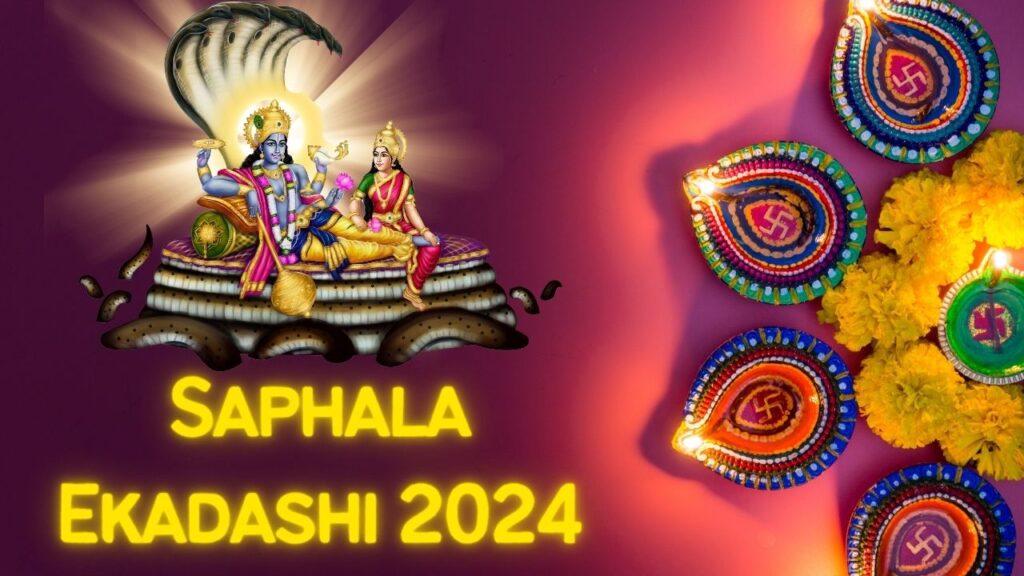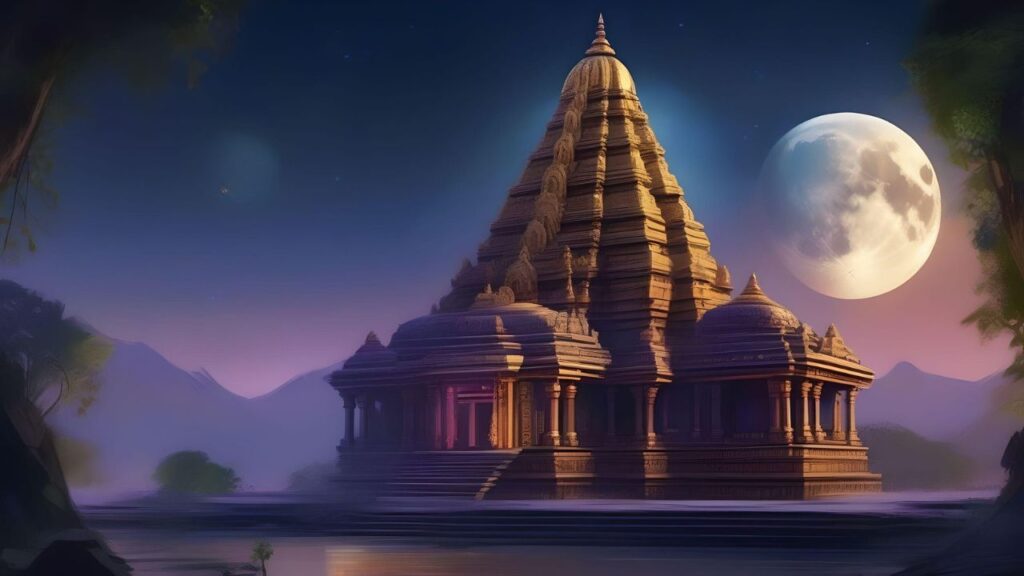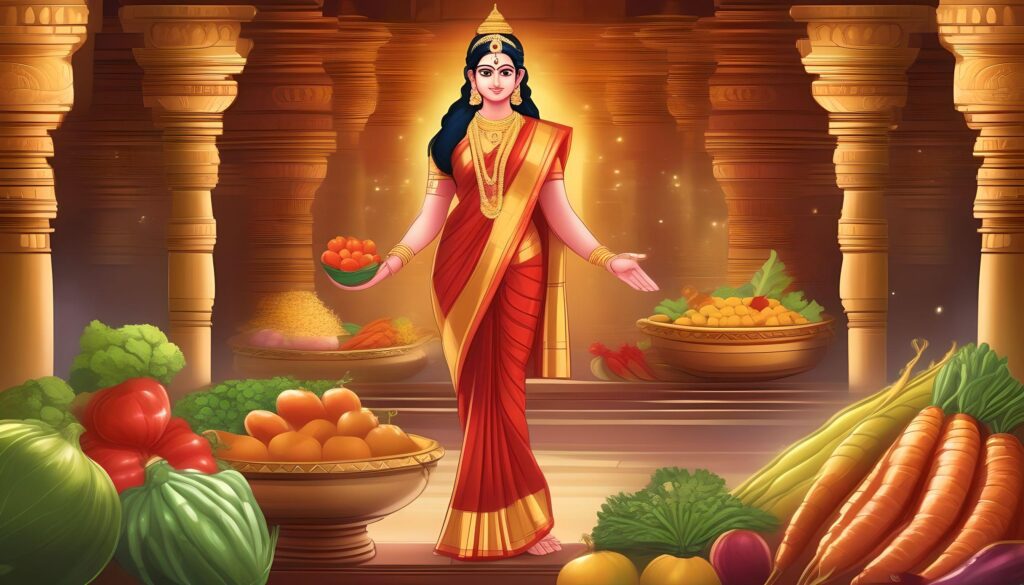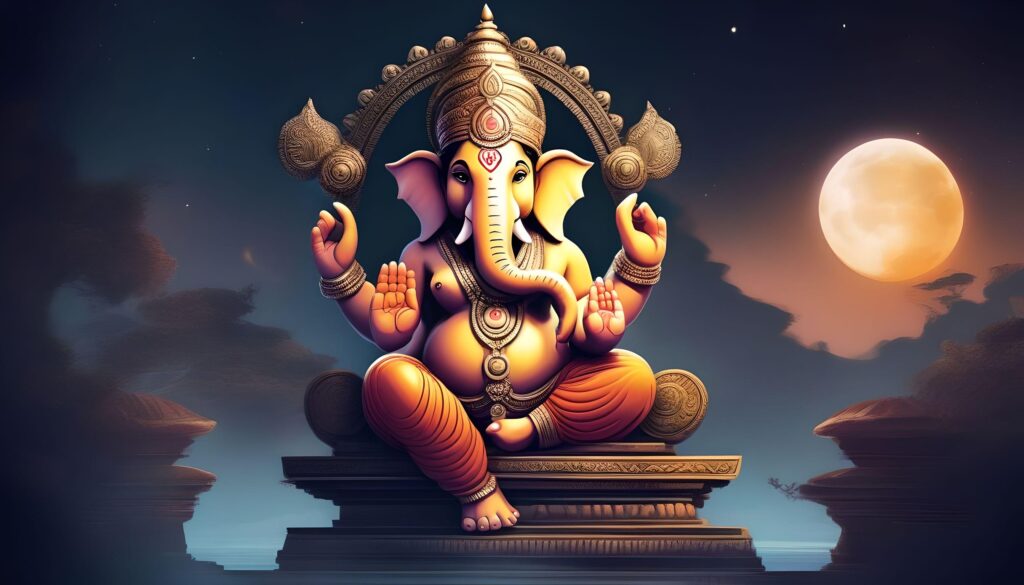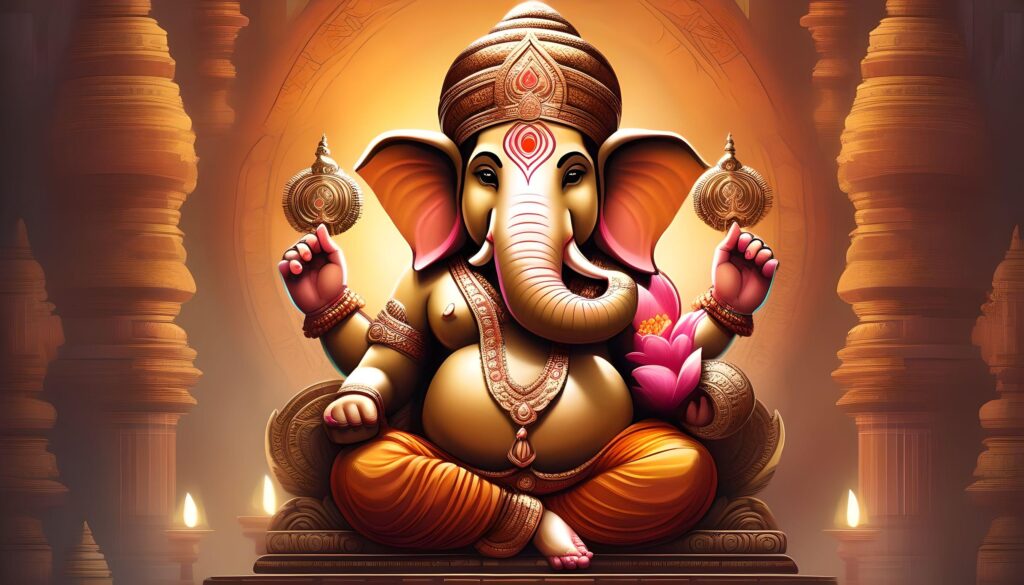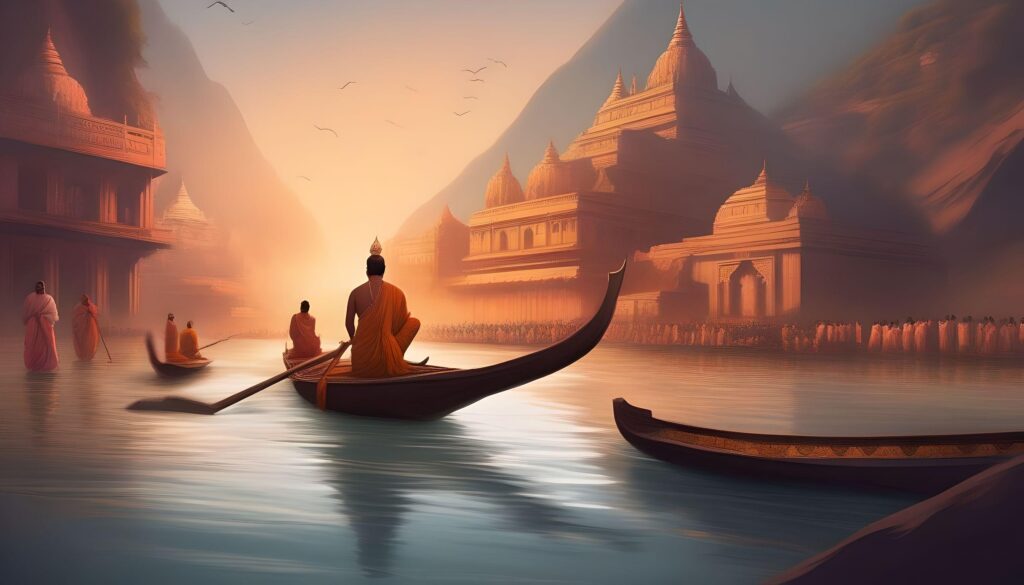Dussehra: Celebrating the Victory of Good over Evil
Introduction
Dussehra, also known as Vijayadashami, is a Hindu festival that is celebrated with great fervor and enthusiasm and bears great significance. It is a period of reflection, celebration, and devotion, and it signifies the victory of virtue over evil. We will examine the history, traditions, and significance of Dussehra in this article, examining the ways in which this auspicious occasion brings success and victory into our lives.
Understanding Dussehra: A Celebration of Good’s Triumph
The divine feminine energy is celebrated during the nine-day Navratri festival, which concludes with Dussehra. It is an opportunity to contemplate the diverse facets of existence and express reverence and gratitude for all that contributes to our well-being. The festival is observed in a variety of ways throughout India and the globe, but its fundamental purpose remains consistent: the triumph of good over evil.
The Legend of Lord Rama and Ravana
Dussehra is associated with the epic narrative of Lord Rama’s victory over the ten-headed demon ruler Ravana, which is one of the central stories. Ravana had abducted his wife, Sita, so Lord Rama, an incarnation of the Hindu deity Vishnu, set out on a heroic voyage to rescue her. Lord Rama emerged victorious after a ferocious combat, symbolizing the triumph of righteousness over wickedness.
Dussehra Traditions Across India and Beyond
Dussehra is observed in a variety of ways across India, with each region contributing its own distinctive customs and rituals to the festivities. Effigies of Ravana, his brother Kumbhakarna, and his son Meghnad are constructed and subsequently set ablaze in numerous regions of the country to represent the annihilation of evil. Vibrant processions, cultural performances, and joyful celebrations accompany this magnificent spectacle.
Dussehra is celebrated with equal enthusiasm in the United States and other countries with a substantial Hindu population. Hindu Americans convene to coordinate community events and festivals, as well as to don traditional attire, including kurtas and saris. These events provide an occasion to exhibit the diverse cultural heritage of India through music, dance, and delectable cuisine.
Dussehra: A Time for Reflection and Renewal
Dussehra is not merely a festive occasion; it is also an opportunity for personal development and introspection. Hindus are accustomed to contemplating their negative qualities and endeavoring to rectify them in the upcoming year. This self-reflection enables individuals to relinquish their prejudices, toxic relationships, and vices, thereby facilitating personal transformation and spiritual development.
The Significance of the Nine Days of Navratri
The Hindu Goddess Durga is venerated in a variety of forms during the nine days preceding Dussehra, which is collectively referred to as Navratri. Each day embodies specific qualities and represents a distinct aspect of the divine feminine energy.
Day 1-3: Tamas – The Fierce Goddesses
The initial three days of Navratri are dedicated to the veneration of formidable deities, including Kali and Durga. These deities represent the capacity to surmount challenges and eliminate negativity. In order to eradicate ignorance, sloth, and other tamasic qualities from their lives, devotees seek their blessings.
Day 4-6: Rajas – The Gentle and Materially Oriented Goddesses
The subsequent three days of Navratri are associated with compassionate goddesses such as Lakshmi, who bestow material prosperity and abundance upon their devotees. This phase of the festival promotes the development of positive attributes, including compassion, gratitude, and benevolence.
Day 7-9: Sattva – The Goddess of Knowledge and Enlightenment
The final three days of Navratri are dedicated to Goddess Saraswati, who is the embodiment of enlightenment, wisdom, and knowledge. In order to achieve spiritual development, knowledge acquisition, and inner clarity, devotees desire her blessings. This phase of the festival promotes the development of qualities such as self-realization, devotion, and discipline among aspirants.
Dussehra and Diwali: Celebrating Light’s Triumph
Diwali, the festival of lights, is celebrated approximately 20 days following Dussehra and is of great importance in Hindu culture. Diwali commemorates Lord Rama’s return to his dominion of Ayodhya after fourteen years of exile, while Dussehra commemorates Lord Rama’s victory over Ravana. The victorious Lord and his wife, Sita, were welcomed by the entire kingdom, which was illuminated with lamps.
Diwali is commemorated with great enthusiasm and encompasses a variety of customs, including the lighting of oil lamps, the exchange of gifts, the bursting of pyrotechnics, and the consumption of delectable meals. The fundamental motif of both festivals is the triumph of light over darkness and the triumph of good over evil.
Celebrating Dussehra: Traditions and Customs
Traditions and customs that differ across regions are observed during Dussehra. We will examine several of the primary rituals that are associated with this auspicious occasion:
Effigy Burning: Symbolizing the Defeat of Evil
The burning of effigies, which symbolizes Ravana’s defeat, is one of the most visually remarkable customs of Dussehra. Frequently adorned with pyrotechnics, these colossal structures symbolize the triumph of good over evil. Crowds congregate to observe the spectacular destruction of the effigies, which are meticulously crafted and positioned in public spaces or open fields.
Ramlila: Reenacting the Epic Battle
Ramlila, a series of open-air theatrical performances that depict episodes from the epic Ramayana, is organized by numerous communities in the lead-up to Dussehra. These elaborate and vibrant reenactments illustrate Lord Rama’s journey, his confrontation with Ravana, and his ultimate triumph. The vibrant costumes, music, dance, and drama of Ramlila performances captivate audiences.
Durga Puja: Worshiping the Divine Mother
Durga Puja is synonymous with Dussehra in certain regions of India, particularly in West Bengal and other eastern states. The culmination of this elaborate festival, which lasts for ten days, is the immersion of exquisitely crafted idols of Goddess Durga. Devotees send farewell to the deity with prayers and processions during the Visarjan immersion ceremony, which culminates in her immersion in rivers or other bodies of water.
Fasting and Feasting: Nourishing the Body and Soul
As a mode of devotion and purification, numerous individuals observe fasts during Navratri and Dussehra. The principles of fasting may differ, with some individuals refraining from consuming specific foods or consuming only specific items. A special supper, which frequently includes traditional dishes and sweets, is served to break the fasts.
Family Gatherings and Celebrations
Families convene to commemorate Dussehra. Friends and relatives exchange visits, share meals, and engage in cultural events. It is a joyful event that cultivates a sense of unity and harmony and fortifies communal bonds.
Personal Reflection and Transformation
Dussehra functions as a potent reminder of the significance of personal introspection and transformation. It promotes the act of introspection, which involves the identification of negative qualities within oneself and the subsequent effort to surmount them. One can begin a journey of spiritual growth and self-improvement by letting go of vices, destructive relationships, and prejudices.
Embracing Goodness and Kindness
Dussehra motivates individuals to embody the virtues of compassion and goodness in their daily lives. It is an opportunity to contemplate how one can positively impact society and improve the lives of others. This auspicious period is characterized by a strong emphasis on acts of charity, compassion, and service.
Setting Positive Intentions for the Future
Dussehra, which signifies the commencement of a new year, presents an ideal opportunity to establish constructive objectives and intentions. Individuals can establish a prosperous and shining future by emphasizing personal development, self-improvement, and the cultivation of virtues.
Conclusion: Celebrating Light, Victory, and Renewal
Dussehra is a festival that symbolizes the victory of light over darkness, knowledge over ignorance, and virtue over evil. It is a period of contemplation, commemoration, and devotion, providing opportunities for personal development and transformation. Embracing the spirit of Dussehra enables individuals to cultivate positive qualities, support their spiritual journey, and establish a more compassionate and harmonious world.
As we commemorate Dussehra, let us recall the timeless message it conveys: the potential for personal and societal transformation, the triumph of righteousness, and the power of kindness. May the festivities infuse our souls with love, joy, and a rekindled sense of optimism for a more promising future.
Primary Keyword: Dussehra Secondary Keywords: Vijayadashami, Hindu festival, triumph of good over evil, Navratri, Diwali, effigy burning, Ramlila, Durga Puja, fasting, feasting, personal reflection, transformation, embracing goodness, positive intentions
#dussehra #happydussehra #dasarafestival #happydasara #dussehrafestival #dasarapooja #dasarapuja
